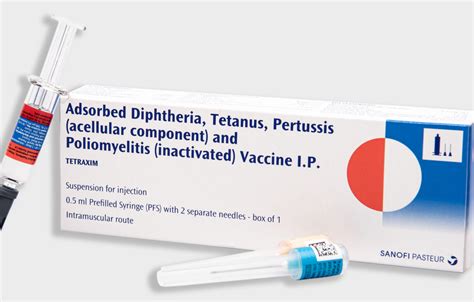Tdap Vs Dtap Vaccine

The Tdap and DTaP vaccines are two types of immunizations designed to protect against similar diseases, but they differ in their target age groups and formulations. Understanding the differences between these vaccines is crucial for ensuring proper vaccination and protection against serious health threats. In this article, we will delve into the specifics of each vaccine, exploring their compositions, recommended uses, and the implications of choosing one over the other.
Introduction to Tdap and DTaP Vaccines

Both Tdap and DTaP vaccines are designed to immunize against diphtheria, tetanus, and pertussis (whooping cough). The primary difference lies in the acronyms: DTaP stands for Diphtheria, Tetanus, and Pertussis, while Tdap represents Tetanus, diphtheria, and acellular Pertussis. The “a” in DTaP and “a” in Tdap indicate the use of acellular pertussis components, which are less likely to cause side effects compared to the whole-cell pertussis vaccines used in older formulations.
DTaP Vaccine
The DTaP vaccine is specifically formulated for children under the age of 7. It provides immunity against diphtheria, tetanus, and pertussis, with the pertussis component being acellular to reduce the risk of side effects. The DTaP vaccine is typically administered in a series of doses, starting at 2 months of age, with subsequent doses given at 4 months, 6 months, 15-18 months, and a final dose at 4-6 years. This vaccination schedule is crucial for protecting young children, who are most vulnerable to the severe effects of these diseases.
Tdap Vaccine
The Tdap vaccine, on the other hand, is designed for older children, adolescents, and adults. It boosts immunity against tetanus, diphtheria, and pertussis, particularly targeting the pertussis component to address the waning immunity that can occur over time in individuals who received their last DTaP dose in childhood. The Tdap vaccine is recommended as a booster dose for adolescents around the age of 11 or 12 and for adults who have not previously received a Tdap vaccine, especially during pregnancy or when working in healthcare.
| Vaccine Type | Target Age Group | Components |
|---|---|---|
| DTaP | Children under 7 years | Diphtheria, Tetanus, and acellular Pertussis |
| Tdap | Adolescents and adults | Tetanus, diphtheria, and acellular Pertussis |

Importance of Vaccination

Vaccination against diphtheria, tetanus, and pertussis is critical due to the potential severity of these diseases. Diphtheria can cause severe respiratory issues, tetanus leads to muscle stiffness and spasms, and pertussis, or whooping cough, is particularly dangerous for infants, who can experience severe coughing fits, pneumonia, and even brain damage or death. The vaccines not only protect the individual but also contribute to herd immunity, reducing the spread of these diseases within communities.
Vaccine Efficacy and Safety
Both DTaP and Tdap vaccines have been proven to be highly effective in preventing the diseases they target. The vaccines undergo rigorous testing for safety and efficacy before approval and continue to be monitored for any adverse effects post-marketing. Common side effects are typically mild and include soreness at the injection site, fever, and fatigue. Serious side effects are rare but can include allergic reactions.
The efficacy of these vaccines in preventing disease outbreaks is well-documented. For example, the introduction of pertussis vaccines has significantly reduced the incidence of whooping cough, though periodic outbreaks still occur, often due to decreased immunity over time and vaccine hesitancy. Booster doses, such as the Tdap vaccine, play a crucial role in maintaining high levels of immunity within the population.
What is the primary difference between the DTaP and Tdap vaccines?
+The primary difference between the DTaP and Tdap vaccines lies in their target age groups and the formulation of the pertussis component. DTaP is for children under 7, while Tdap is for adolescents and adults, providing a booster dose to maintain immunity against pertussis.
Why are booster doses important for tetanus, diphtheria, and pertussis immunity?
+Booster doses are crucial because immunity to these diseases, especially pertussis, can wane over time. Booster shots, like the Tdap vaccine, help maintain high levels of immunity, reducing the risk of disease and preventing outbreaks.
Are the DTaP and Tdap vaccines safe for everyone?
+Like all vaccines, the DTaP and Tdap vaccines are thoroughly tested for safety and efficacy. While they are considered safe for the vast majority of the population, there may be specific circumstances or conditions under which a vaccine should not be administered. It's essential to consult with a healthcare provider for personalized advice.
In conclusion, understanding the differences between the DTaP and Tdap vaccines is vital for ensuring that individuals of all ages receive the appropriate protection against diphtheria, tetanus, and pertussis. By maintaining high vaccination rates and adhering to recommended booster schedules, we can effectively prevent the spread of these serious diseases and protect public health.



